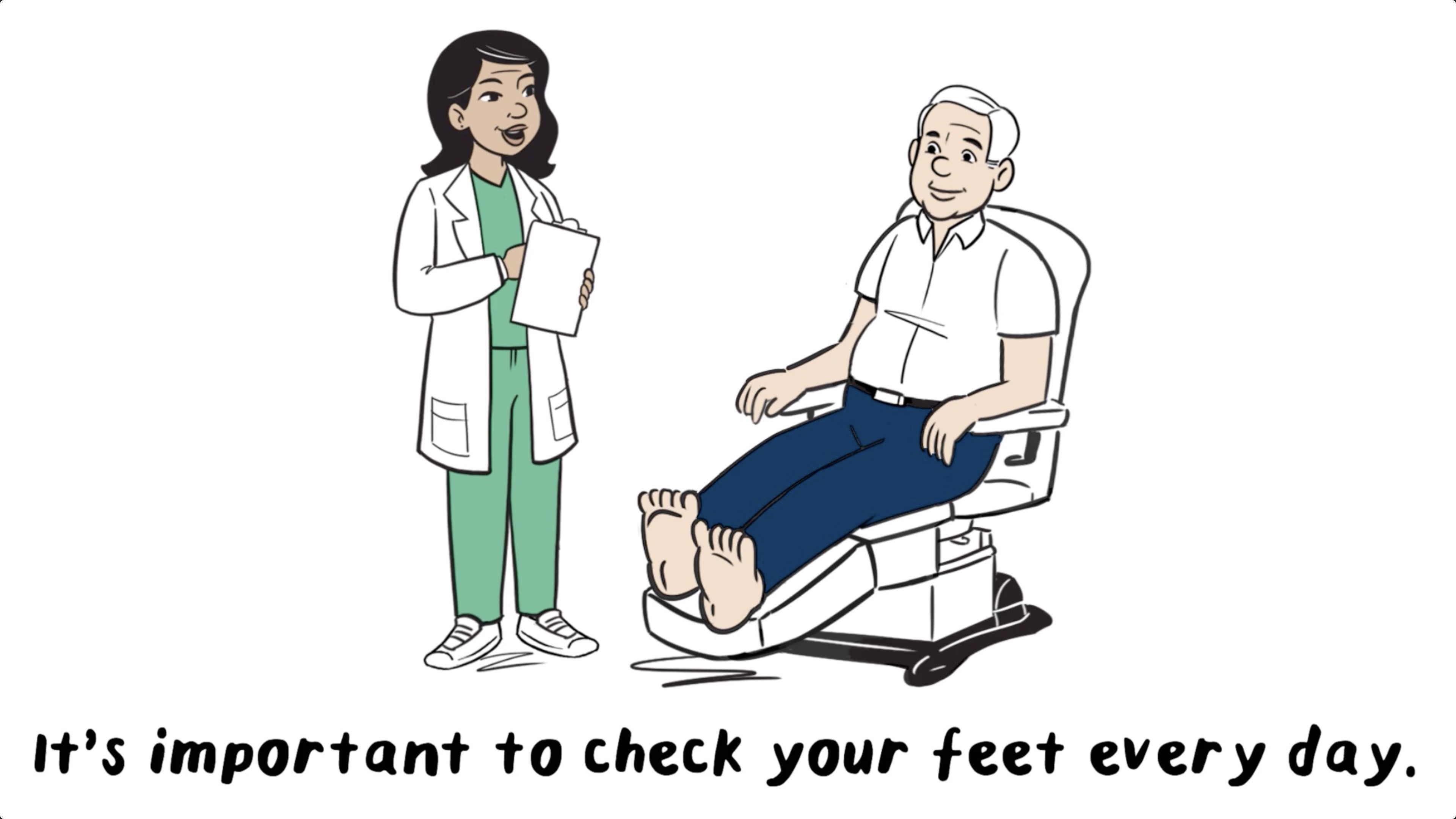Diabetes is very prevalent in our practice. While there are several treatment plans we perform in the office for diabetics, self-care at home is equally important. Paying attention to your feet every day can help prevent complications from Diabetes, particularly infection or death of tissue from poor blood flow.
These complications lead to a more severe one – partial or complete amputation of the foot. As a podiatrist, I try everything I can to stop this from occurring. However, patients with a daily routine are less likely to develop a problem with their feet. Here is a checklist of good habits for all diabetic patients:

- Care for your Diabetes starts with your primary care physician. With regular check-ups, your PCP can help guide you with appropriate diet, exercise, and medication to get your glucose levels under control. Check your fasting blood glucose daily or as often as your PCP recommends. Your PCP can also help you quit smoking, which makes complications of Diabetes even worse.
- Check your feet daily. Use a hand held mirror, or have a family member help. You are looking for breaks in the skin, ingrown toenails, blisters, red or hot spots, calluses with dried blood, and anything in between the toes. If you do see anything unusual, do NOT scratch or pick as this can lead to infection.
- Wash feet daily and dry in between the toes. Do not soak your feet, as this can dry out skin. After washing feet, apply a thin coat of lotion over tops and bottoms but NEVER in between the toes. This can lead to a fungal infection.
- If your podiatrist says it is okay to cut your own toenails and you are able to reach them, cut straight across and then file with emory board. NEVER get a pedicure.
- In most cases, it is recommended for your podiatrist to trim your calluses or corns. You may use a pumice stone if your podiatrist says it is okay. NEVER use over the counter corn/callus removers or a “Ped Egg.” This can lead to wounds, especially in patients with numbness.
- Shoes and socks must always be worn, even at home. Look in shoes before you put them on to check for any pebbles or sharp objects. Purchasing seamless socks is best. Break in new shoes for a few hours a day over a couple of weeks and then check for soreness or redness. Ask your podiatrist for shoe recommendations or if you are eligible for diabetic shoes.
- Be wary of hot and cold. Never use ice packs directly on skin and for only 20 minutes every hour. Wear waterproof boots in the snow. NEVER use heating pads, electric blankets, and space heaters near feet. Avoid hot showers and baths.
At a minimum, all diabetics must see a podiatrist annually for an exam. Patients with previous complications should come in every three months for an exam as well as care for their nails and calluses/corns. You should make an appointment as soon as possible if you experience:
- Any foot injury or any foot pain that is out of the ordinary
- Abnormality in the skin, especially a new wound
- Foot changing color or shape
- Leg pain that wakes you up at night
- Numbness that you never felt before
- Signs of infection (redness, swelling, warmth, pain, white milky drainage from a wound, foul odor)
- Signs of severe circulation problems (purple or blue discoloration of skin, red or white discoloration of toes, black hardened tissue)
If you are unsure if you should come in for an appointment, it’s better to be safe than sorry! We are always available to help you get better and back on your feet.
